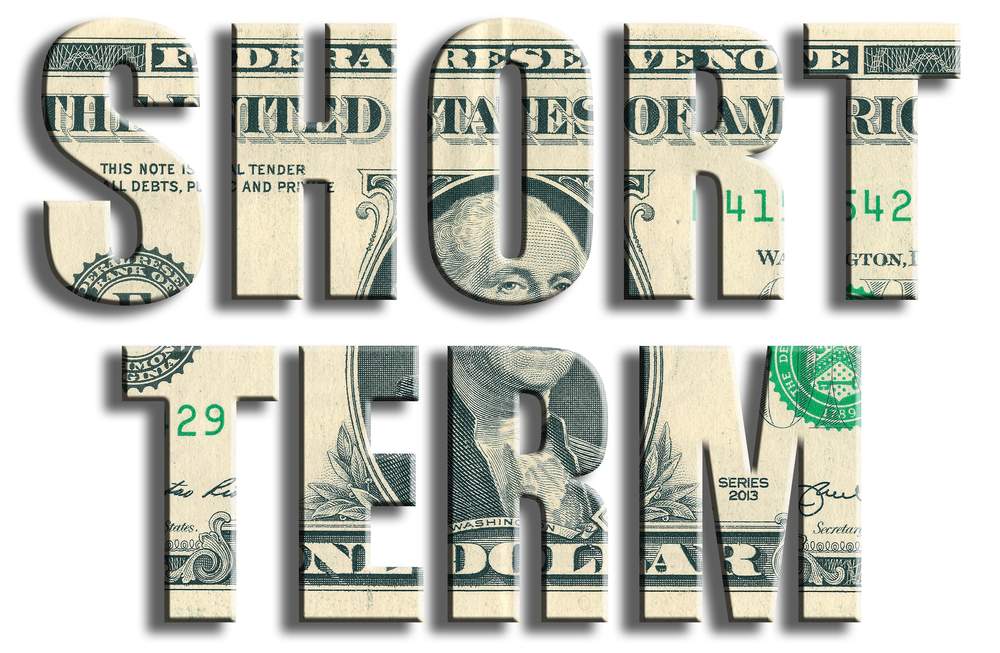Bait and switch is a tactic often used by automobile dealers to attract customers with one vehicle, then redirect their focus to another vehicle that brings the seller more profit. Investors need to be wary of these same tricks. Always pay attention to the value proposition you originally signed up for. One example is Desktop Metal’s P-50 production platform which seems to be deemphasized by management with focus being redirected to the assets they acquired when purchasing ExOne, a company that wasn’t realizing its own growth proposition. That brings us to Ginkgo Bioworks.
If Meta has shown us anything, it’s that “build it and they will come” doesn’t work well for disruptive technologies. Investing in a platform only works if people are willing to pay for it consistently over time. When Ginkgo Bioworks did the pandemic pivot into an anonymous group testing product called Concentric, we questioned this move as a bait-and-switch from the value proposition we originally wanted exposure to. The other two synbio players – Amyris and Zymergen – also pivoted away from their original value proposition. The former is hiring people to sell cosmetics, while the latter failed at bringing their product to market and was then acquired by Ginkgo. (More on this in a bit.) Ginkgo’s platform approach is one reason we continue to really appreciate the bull thesis which we recently covered.
Ginkgo is not a product company; we are an enabling platform for product companies in a range of end markets. We do not seek to “pick winners” and focus instead on building our platform rather than investing in product-specific risk.
Credit: Ginkgo Bioworks
The above statement encapsulates why we avoided Zymergen – and continue to avoid Amyris. The core competency of a synthetic biology company that harnesses the power of nature is their platform and nothing else. However, the only way we’ll know if the platform has harnessed the power of nature is if the world’s leading companies produce successful products using it.
The Importance of Revenues
Revenue growth is the ground truth that proves Ginkgo’s platform works as advertised. Like most SPACs, Ginkgo is falling behind their promises, but let’s ignore that for now. Here’s how the company should evolve over time:
- Client signs up to use magical synbio platform (what Ginkgo describes as “new program additions” – these do not prove the platform works.)
- Client produces products using platform (Zymergen developed their own products)
- Client then uses their new products to cannibalize existing products or address new opportunities (these success stories result in downstream upside for Ginkgo)
- Client recognize how well synbio works and immediately adds more projects to Gingko’s pipeline
- Ginkgo ideally realizes a smaller set of large marquee clients across each industry vertical (easier to manage than a large set of small clients + more upside in downstream revenues)
You can see how downstream value is “a significant driver of long-term value,” in the company’s own words. It’s also validation that the platform works. But so far, the results have been less than impressive. Below you can see how nearly all the downstream value has come from a single firm – a $740 million cannabis company called Cronos Group (CRON).

To date, harnessing the power of nature has resulted in a CBD gummy bear called Spinach FEELZ which Cronos spent way too much money developing. We know that because they recorded “impairment charges for the differences between the consideration paid to Ginkgo for the achievement of two equity milestones in connection with the Ginkgo Collaboration Agreement and the fair values of the exclusive licenses for CBGA and for CBGVA.” Does Average Joe Cannabis Smoker know, or even care, that the world’s most powerful synthetic biology platform was used to create the active ingredient in the overpriced gummy bears he’s purchasing? Probably not.
Ginkgo’s realization of downstream value in 2023 is an open question because they’ve left it an open question when providing guidance. Instead of the $341 million in Foundry revenues promised in the SPAC deck, we’re offered $175 million (last year’s target which was missed) and some unknown promise of downstream value to be realized.

Last year, more than half of all new potential downstream value was attributed to a single company – Selecta Biosciences – which has been diluting the heck out of their shareholders.

What’s the likelihood that they pay off Ginkgo using shares instead of cash? Probably high if history is any indicator. Incredibly, cash revenues from Ginkgo’s platform are actually declined year-over-year while non-cash consideration was responsible for all the growth.

That’s a concern, because any old company can issue shares in payment for a service. It’s companies that fork over cash which demonstrate the true value of the platform. Like related-party revenues, non-cash transactions don’t prove the platform is achieving traction. Speaking of which, the good news is that Ginkgo sees related party revenues falling over time along with their dependence on coronavirus testing which is now morphing into “biosecurity as a recurring infrastructure as a service.”
Valuing Ginkgo Bioworks
We don’t care that they signed “biosecurity-focused Memoranda of Understanding with partners in Qatar, Rwanda, the Kingdom of Saudi Arabia, and the Republic of Botswana,” an eclectic mix of names that wouldn’t be out of place in an OTC company press release. Whatever they’re pivoting their pandemic pivot into next isn’t what we’re here for. We’re solely interested in Foundry Cell Engineering revenues that don’t come from related parties. Such revenues accounted for annualized revenues of $184 million for Ginkgo (based on Q4-2022 numbers) which constitutes a simple valuation ratio of 14. That’s below our cutoff of 20, but above our catalog average of 8.
Critics rightly suggest that we should apply the same rules across the board for all companies. In other words, we shouldn’t exclude Ginkgo’s pandemic pivot revenues, or whatever healthcare venture they’re moving into next. Fair enough, but Ginkgo has an exceptionally complicated business model which requires a more complicated method of analysis. We don’t consider related party revenues to validate the platform, nor do we find sole milestone payments from a single company that later wrote off the entire effort as a waste of money to be compelling either.
Newbie investors look at Ginkgo trading at $1.25 a share and think it’s “cheap” without considering that a 100-1 reverse stock split could make shares trade at $125 with no change in intrinsic value whatsoever. What these people aren’t paying attention to is the dilution that’s happening over time which – based on the laws of economics – puts downwards pressure on shares. Let’s look past the debate about whether Ginkgo’s top two executives deserve the $728 million in compensation they received in 2021 and simply focus on the bottom line – shares outstanding – which is steadily increasing over time.

To be fair, some of that increase can be attributed to the acquisition of Zymergen, an event that added questionable value to shareholders.
Zymergen and Joyn Bio
It’s very important to revisit why we were avoiding Zymergen in the first place. It’s not because they developed a thin film product and failed miserably at trying to sell it. We learned about their product failures after the fact. Our point of contention was that Zymergen plainly admitted to shareholders that their platform wasn’t being used to produce their products. Instead, they relied on third-party manufacturers to produce their products while telling investors, “we are currently developing commercial scale processes so we can produce the molecule through fermentation at sufficient volumes and costs to support commercial manufacturing.” In other words, they hadn’t even mastered production at scale using their magical synthetic biology platform and decided to have an IPO anyway. (At least they didn’t go the SPAC route.)
Ginkgo framed the event as an aqui-hire which was “expected to fill significant planned hiring by Ginkgo,” with “upside if able to monetize Zymergen’s product pipeline or restructure real estate obligations.” Again, if Zymergen ran into problems trying to make their platform work which saw their share price crater, then Ginkgo is now stuck with their problems in addition to making their own platform scale. The same investor presentation that tried to spin the Zymergen acquisition as beneficial also announced their renewed relationship with Bayer, a firm that they created a joint venture with back in 2017 – Joyn Bio – one that also happens to be their oldest. That joint venture has now been dissolved, something that doesn’t scream success, but it was spun to investors as a positive. The truth, however, is in the revenue pudding. After five years, shouldn’t we have started to see some royalties emerge from the Bayer relationship?
Conclusion
If Ginkgo built a platform that harnesses the powers of nature, large companies should be lining up to get in on the action. Indeed, Ginkgo’s SPAC deck claims marquee names like Cargill, Roche, and Bayer. When will these firms start contributing downstream value for Ginkgo? Why muck about with small players like Cronos Group and Selecta Biosciences when the world’s leading manufacturing firms across all industries should be tripping over each other’s skirts to get access to a platform that has harnessed the power of nature? We’re now being told that “the inflection in our growth in biopharma is a key indicator of success.” No, the only key indicator of success is Cell Engineering revenues and downstream value (especially in the form of royalties) which shows that the world’s greatest synbio platform is churning out products that end customers are buying.
Tech investing is extremely risky. Minimize your risk with our stock research, investment tools, and portfolios, and find out which tech stocks you should avoid. Become a Nanalyze Premium member and find out today!
















